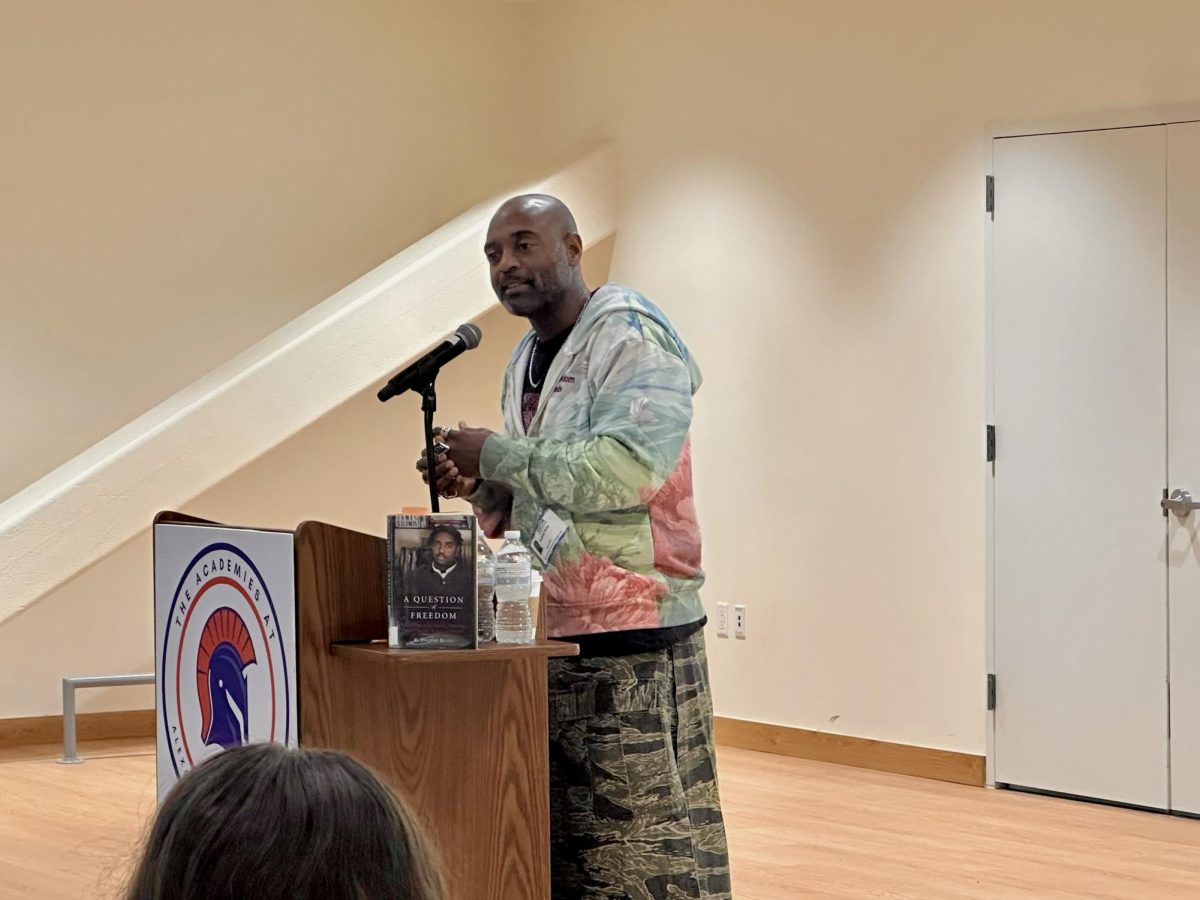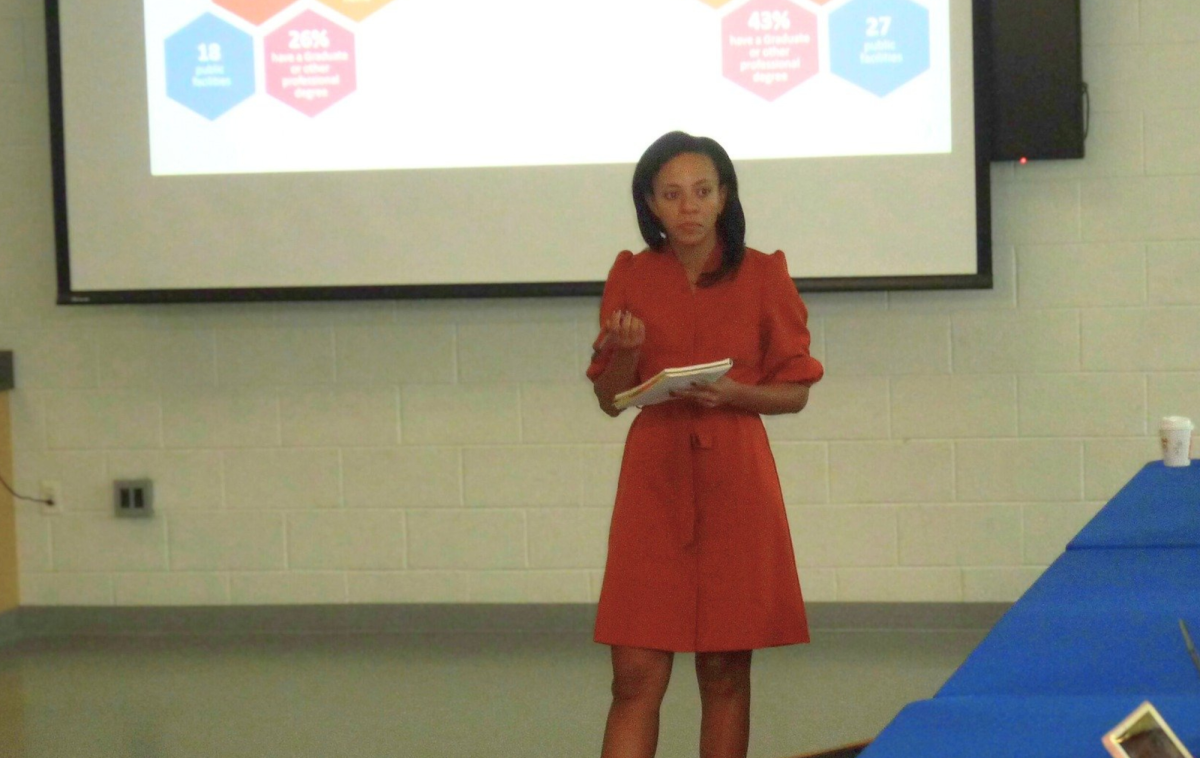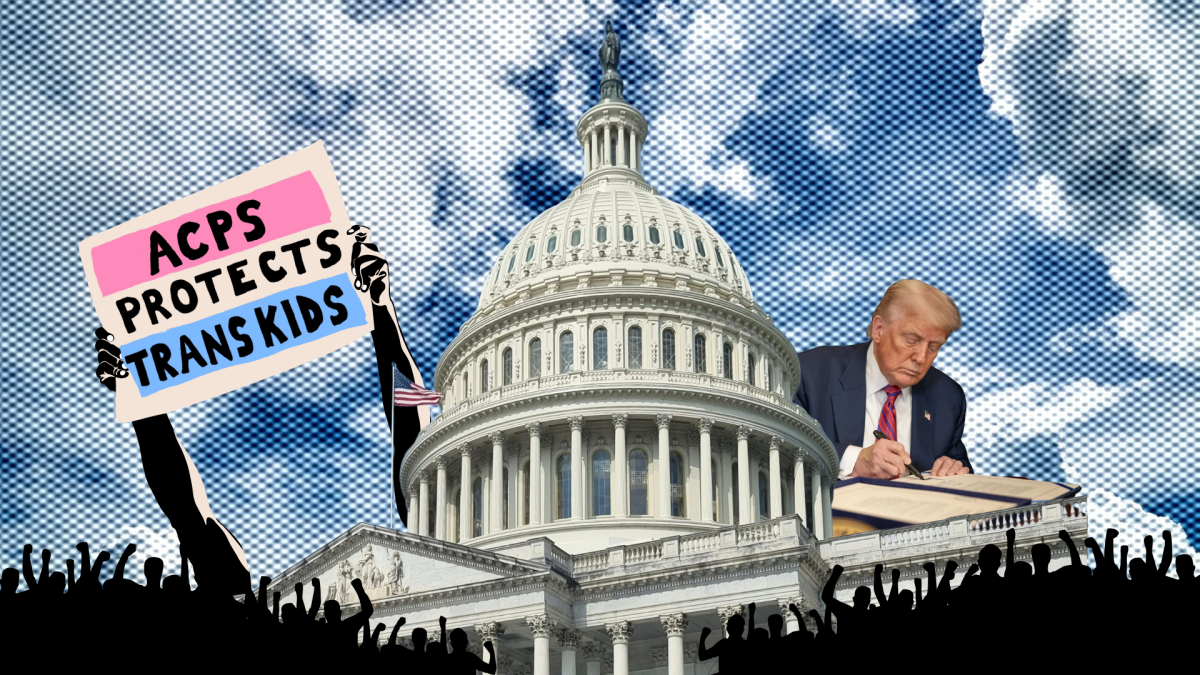As teachers grapple with a growing number of students dubiously getting ahead on their assignments via Artificial Intelligence — or AI — Alexandria City Public Schools is taking a new approach: If you can’t beat them, join them.
A presentation to the school board on Jan. 9 outlined the school district’s philosophy and preliminary timeline for a divisionwide implementation of artificial intelligence.
Delivering the presentation was ACPS Director of Instructional Technology Emily Dillard. Dillard is a member of the division’s AI Impact Team, which is leading the movement to instill AI into ACPS operations. Superintendent Melanie Kay-Wyatt, Chief Academic Officer Pierrette Finney and Chief Technology Officer Elizabeth Hoover are also on the AI Impact Team, alongside a smattering of other ACPS staff and principals.
The presentation focused primarily on establishing a philosophy of AI implementation, centering on principles such as data security and learning enhancement.
A chart displaying different levels of integration showed that ACPS is in the process of implementing professional learning for staff regarding AI. However, in terms of student usage of AI, the team is still performing research.
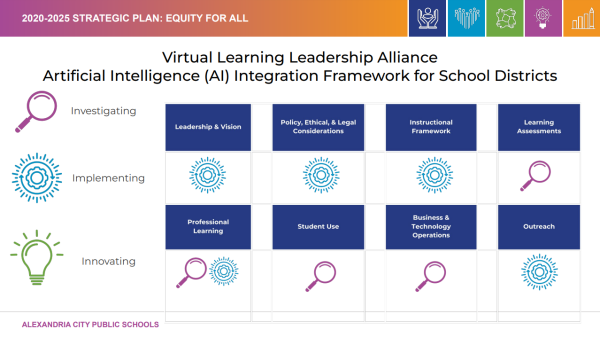
“We haven’t made any decisions about anything yet,” Dillard said. “We’re really just in an exploration phase at this time, and we’re moving into things like professional learning, and thinking about what it looks like for students over the next few months.”
One of the team’s major goals is to allow students to use generative AI on assignments, though different assignments would call for different levels of AI usage. Generative AI is essentially AI that responds to a prompt by generating text, images, audio or even video.
A draft of a “teacher resource rubric” was displayed during the presentation, and sets out four “tiers” of AI usage for students on assignments. The tiers range from the lowest amount of AI usage — none at all — all the way to “AI as an essential tool,” which states that for these assignments “AI is integral to the work” for “generating insights.” Students would have to disclose the level to which they are using AI for any single assignment, respective to the amount the teacher is allowing for the assignment.
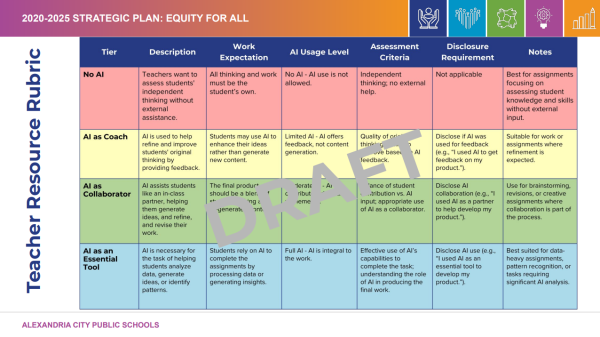
The team is looking to hold student discussion groups to receive feedback from students about what they believe is the best way forward regarding AI.
“What we really want to learn more about is where you see AI supporting you,” Dillard said.
The team’s implementation process is part of the “Generative AI Year of Learning,” a resource program by the Virginia Department of Education, as well as the Association of School Superintendents.
When discussing the purpose of allowing students access to generative AI tools, Dillard explained that the context of AI is similar to the introduction of Google.
“I remember a time when Google didn’t exist, … so when we think about … generative AI, we are very heavily focused on …[supporting] our staff and our students … with the tools and the knowledge that they need to be able to be successful in the future,” she said. “It’s really pervasive and it’s really hard to get away from it.”
Many argue that the use of generative AI isn’t academically stimulating and stunts students’ critical thinking skills. This is especially stressed when considering the use of generative AI in elementary and middle school classrooms, where critical thinking is developing significantly. Dillard, however, is confident that this wouldn’t be the case.
“When we’re specifically thinking about generative AI at this point we’re really looking at high school and older,” she said. “We don’t have any current plans to use generative AI with students in elementary school at this point.”
Dillard also pointed out that many AI tools require students to be at least 13 years old, which prohibits them from being used by elementary school and most middle school students.
In terms of hampering critical thinking skills at the high school level, Dillard believes that using AI in itself still requires critical thought, and isn’t an all-out shortcut.
“The use of AI requires a certain level of critical thinking to actually use it the way that you want to get the desired outcomes.” She also said the team is “providing professional learning for teachers” to support the development of critical thinking in the classroom.
The AI Impact Team is also aware of the challenges that AI poses regarding harmful outputs into the environment, and is continuing to observe active research in the area. The team is also working with teachers and staff to adopt AI policies that benefit ACHS students in the International Academy and English Second Language programs, as well as students in Special Education, according to Dillard.
Caleb Etse, a senior at ACHS, supports a moderated compromise-centered approach to AI integration.
“I think it’s OK for students to use [AI] to get ideas. It can be helpful in that sense,” he said. “But, it is important for students to understand that they have to learn how to do stuff on their own.”
While Caleb, just like the rest of the ACPS community, doesn’t know how the use of generative AI would be regulated, he thinks students should still complete the majority of their assignments.
“I think it’s fine as long as students are not directly copying and pasting the generated content,” he said.







